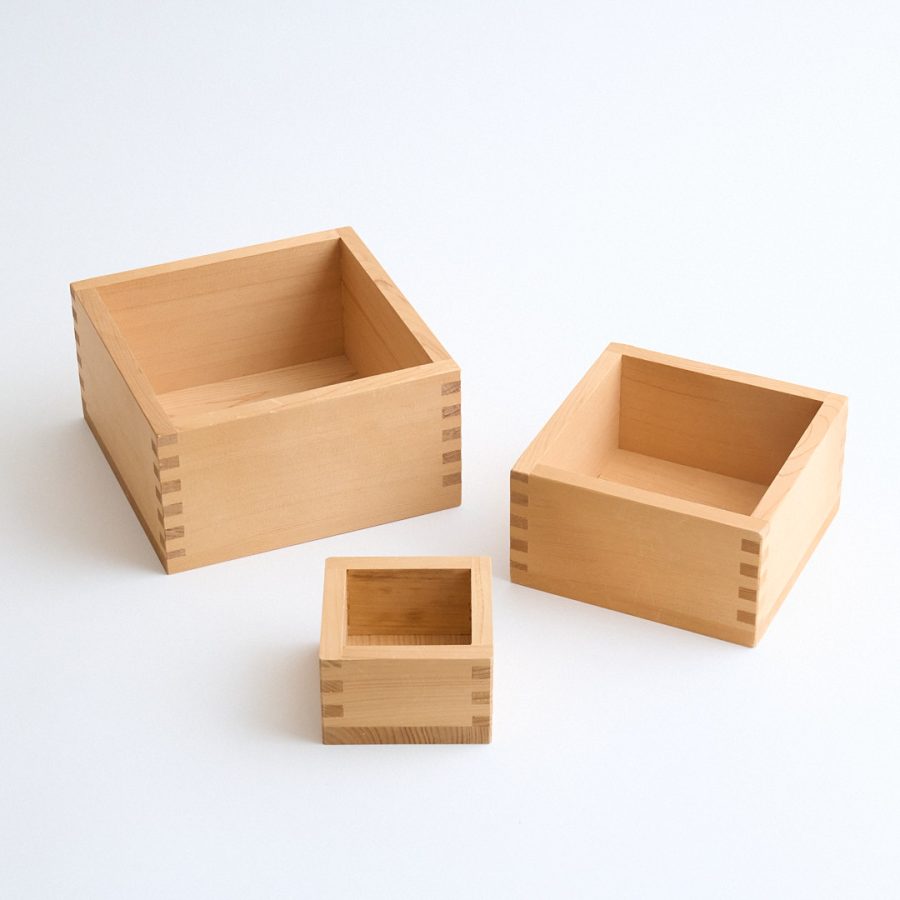2023.07.05
“Masu” changed its role to drinking vessel in history
“Masu” is used when drinking sake or throwing beans for Setsubun. We introduce history and culture of familiar tools that have existed in Japan since ancient times, such as how to use them that have changed over time.

Existing from more than 1300 years before
History of masu in Japan dates back to Muromachi period. The oldest masu in Japan is square wooden masu excavated from ruins of Heijokyo in Nara. Around same time, “Taiho Ritsuryo” enacted in 701, established “system of weight and measure.” In order to establish taxation and land system, this established unit of “degree = length”, “amount = volume” and “kou = weight”. It is written that volume unit should be “Sho”. From this fact, it is believed that masu has been used as scale from more than 1,300 years before.
For your reference, metal and ceramic scale were common in China and Korean peninsula then. Masu made of wood can be said to be culture unique to Japan, which is blessed with rich forest.
Hideyoshi Toyotomi unified capacity
“Shaku” for length and “Kan” for weight, which were stipulated by Taiho Ritsuryo did not change much after that, but capacity of 1 sho differed depending on region and times.
At that time, masu was used to measure everything from rice, sake, oil, fish and potato, etc. Therefore, there were many cases where feudal lords, who wanted to get more annual tribute for grain, changed masu size bigger. In order to unify masu, emperor Gosanjo created standard masu called “Enkyu Senjimasu”, but various masu appeared after that.
Hideyoshi Toyotomi put this together again. Hideyoshi used 1 masu = 10 Go as standard by “Kyomasu”, which was used in Kyoto. In Taikokenchi system, it was adopted for calculating production volume of each land. In Edo period, Ieyasu Tokugawa used something called “Edo masu” for a while, but in 1669, to use of anything other than Kyo masu was prohibited.
As lucky charm for special day
After that, in Meiji era, new government shifted to metric system for notation of physical quantity, and masu ceased to be used as scale, gradually changed its role to sake cup. Masu used to hold rice and bean used for offering to god is considered sacred, and is said to ward off evil as lucky charm. Therefore, it is used for celebratory occasion such as wedding. Scent of wood and beauty of wood grain make sake even more delicious.
By the way, placing glass in masu and pouring sake into it is called “Mokkiri”. In Edo period, when sake was sold by weight, it was sold by pouring sake to last minute with masu. Etymology comes from word of “morikiri” In addition, masu culture is deeply rooted in our lives, such as fact that masu is still used today to represent amount of sake.